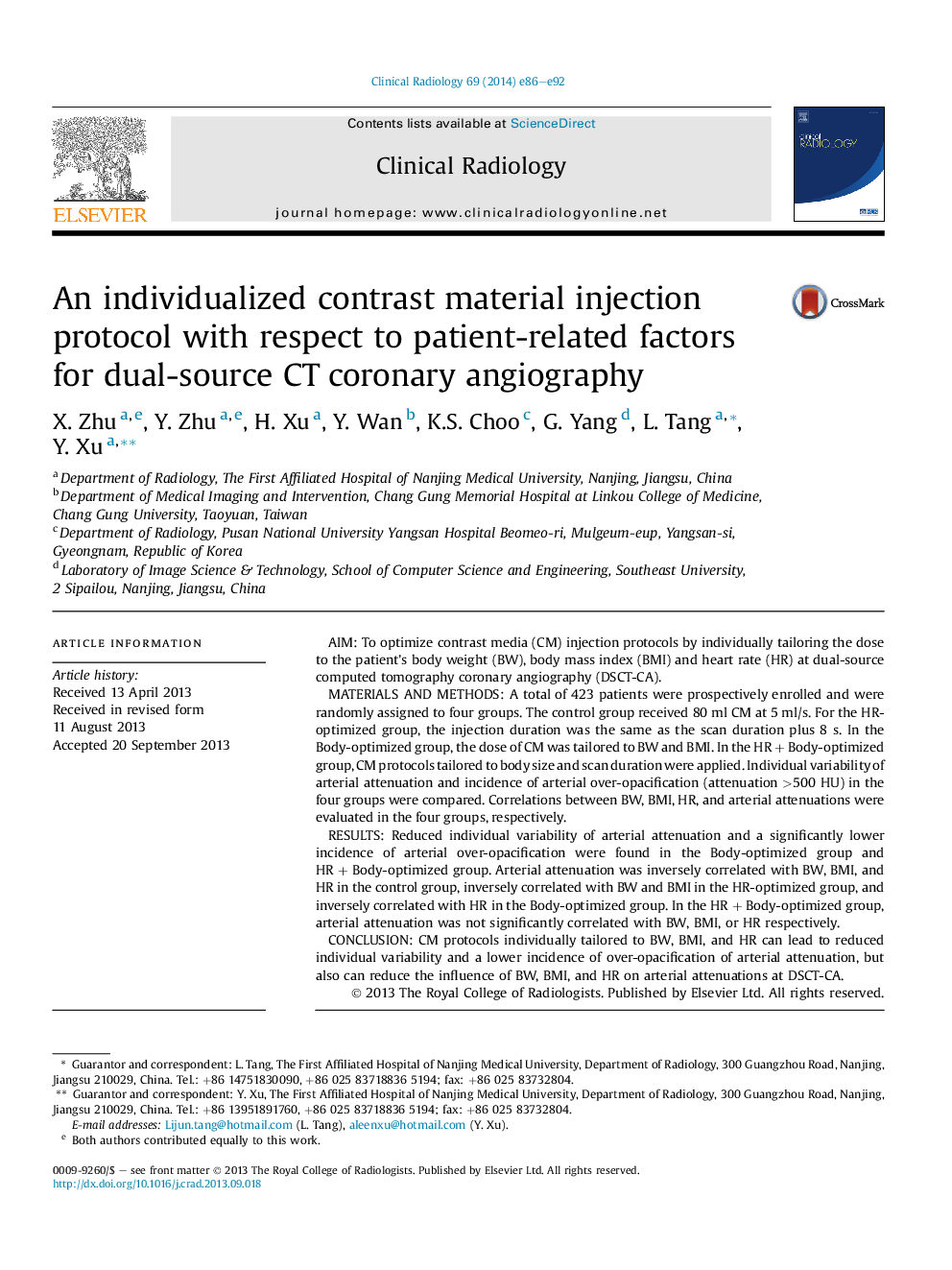| Article ID | Journal | Published Year | Pages | File Type |
|---|---|---|---|---|
| 3981486 | Clinical Radiology | 2014 | 7 Pages |
AimTo optimize contrast media (CM) injection protocols by individually tailoring the dose to the patient's body weight (BW), body mass index (BMI) and heart rate (HR) at dual-source computed tomography coronary angiography (DSCT-CA).Materials and methodsA total of 423 patients were prospectively enrolled and were randomly assigned to four groups. The control group received 80 ml CM at 5 ml/s. For the HR-optimized group, the injection duration was the same as the scan duration plus 8 s. In the Body-optimized group, the dose of CM was tailored to BW and BMI. In the HR + Body-optimized group, CM protocols tailored to body size and scan duration were applied. Individual variability of arterial attenuation and incidence of arterial over-opacification (attenuation >500 HU) in the four groups were compared. Correlations between BW, BMI, HR, and arterial attenuations were evaluated in the four groups, respectively.ResultsReduced individual variability of arterial attenuation and a significantly lower incidence of arterial over-opacification were found in the Body-optimized group and HR + Body-optimized group. Arterial attenuation was inversely correlated with BW, BMI, and HR in the control group, inversely correlated with BW and BMI in the HR-optimized group, and inversely correlated with HR in the Body-optimized group. In the HR + Body-optimized group, arterial attenuation was not significantly correlated with BW, BMI, or HR respectively.ConclusionCM protocols individually tailored to BW, BMI, and HR can lead to reduced individual variability and a lower incidence of over-opacification of arterial attenuation, but also can reduce the influence of BW, BMI, and HR on arterial attenuations at DSCT-CA.
